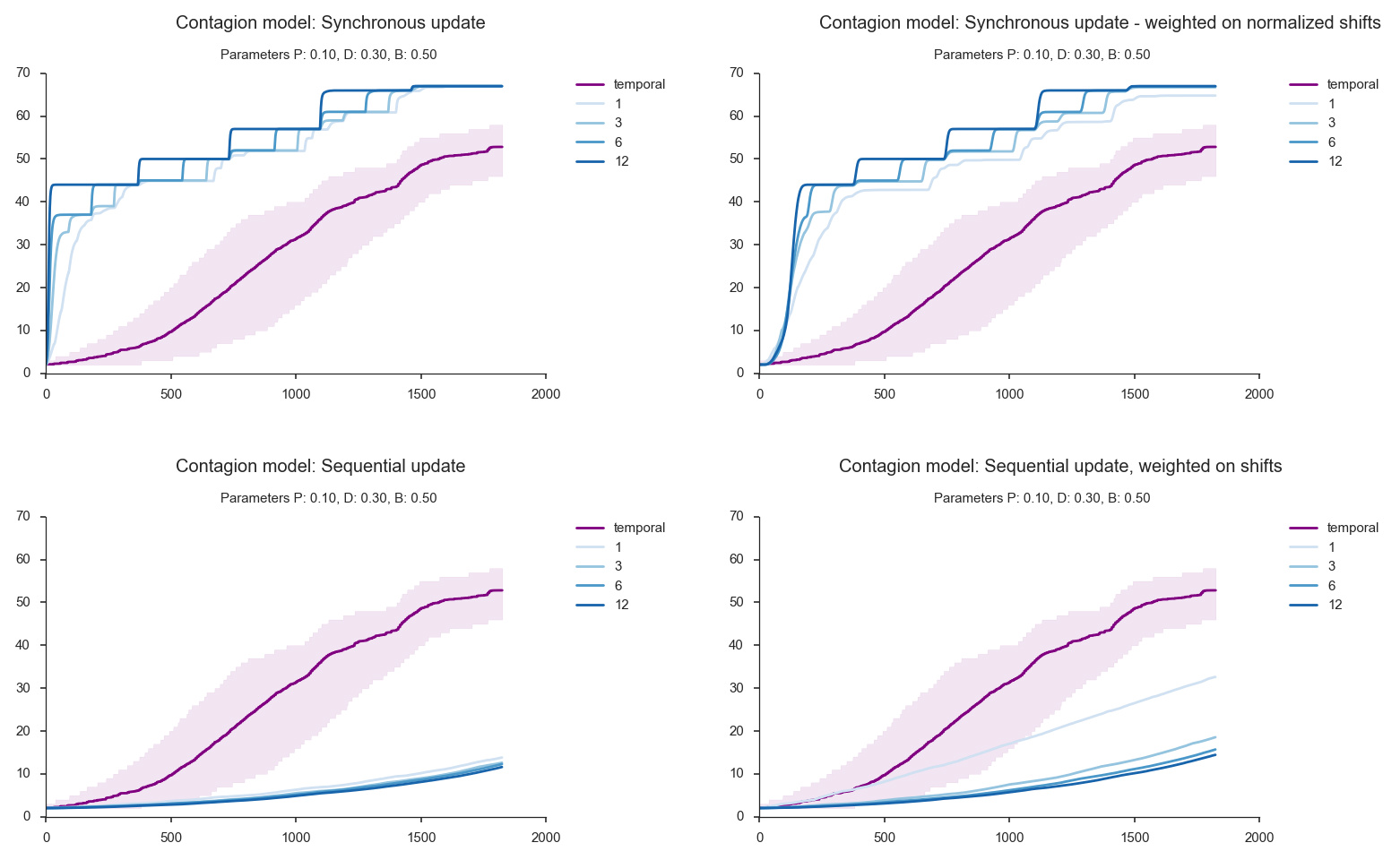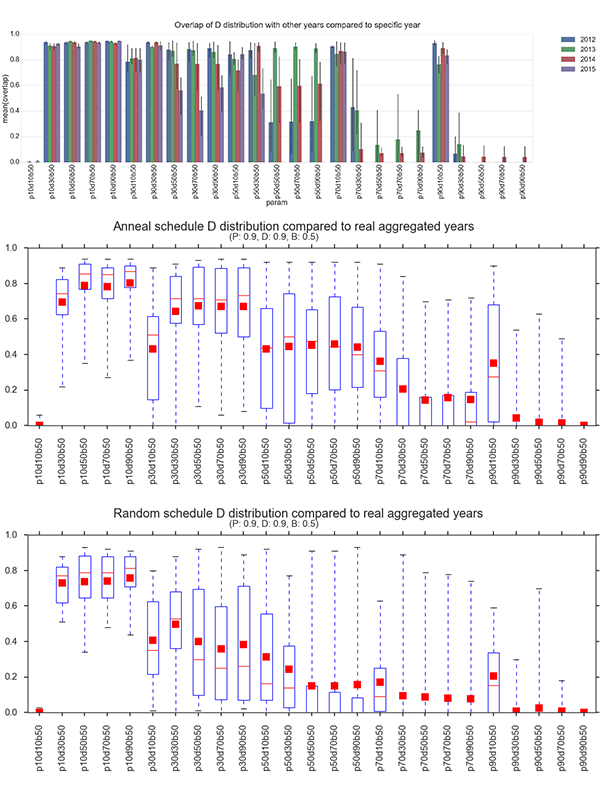Presenting Author:
Principal Investigator:
Luis Amaral, M.S.c.
Department:
McCormick
Keywords:
data science, network, adoption of innovation, modeling, shifts, contagion model, bipartite network
Location:
Third Floor, Feinberg Pavilion, Northwestern Memorial Hospital
PH7 - Public Health & Social Sciences
Importance of temporal properties in network
Understanding the social network has enabled us to quantitatively study social phenomena such as behaviors in adoption and propagation of information. However, most work has been focusing on networks of large heterogeneous communities, and little attention has been paid to how work-relevant information spreads within networks of small and homogeneous groups of highly trained individuals, such as physicians. Within the professionals, the behavior patterns and the transmission of information relevant to the job are dependent not only on the social network between the employees but also on the schedules and teams that work together. In order to systematically investigate the dependence of the spread of ideas and adoption of innovations on a work-environment network, we sought to construct a model for the interaction network of critical care physicians at Northwestern Memorial Hospital (NMH) based on their work schedules. We prove that defining the format of a network is important in studying the spread of ideas. We compare the temporal bipartite network that occurs naturally at the hospital and compares it to projected network. We used different belief updating schemes to see how different assumptions can lead to different results. The first method is synchronous update of beliefs. Each node is affected by all of its neighbors at a specific time. This method can be used for airborne transmissions such flu. Also, in the diffusion of innovation when the influence can happen just by being in proximity such as seeing other people using a smartphone app. The second method is sequential update of beliefs. Starting at an infected node, next node is chosen amongst its neighbors and the influence is calculated between the two nodes, third node is chosen between neighbors of the second node and so on. This types of infection scheme can be used for diffusions processes where simple contact is insufficient to describe it, such as change of opinions during discussion and diseases such as sexual contacts. From the results of different network dynamic schemes, we identified using different assumptions and network schemes can lead to very different results, especially taking into account of the temporal properties of the network is important, which we could prove from the random walk diffusion dynamics. However, there are cases where we cannot always get the exact information in temporal networks. So we have created an algorithm that can generate physicians schedule at the MICU. We inferred patterns and hidden rules from past work schedules. Using the characteristics of the work schedules of the physicians and their turnover rates, we were able to create multi-year synthetic work schedules for a generic intensive care unit. Although further investigations and developments are needed, this schedules generated with this algorithm has more predictability than schedules created at random.


